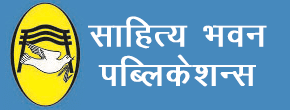This book on Money and Financial Systems has been written for B.Com. Examination as per Syllabus prescribed by the University Grants Commission (U.G.C.) covering all the topics as included in the Syllabus.
The book has been written in very simple language to help students to understand the subject properly. At the end of each chapter, a brief summary has been given to help the students to recapitulate the contents of the subject covered. A number of questions for revision have also been given to help the students to prepare for the examination.
Money and Financial Systems Syllabus For B.Com. Classes
UNIT-I Money: Functions; Alternative measures to the money supply in India and their different components; Meaning and changing the relative importance of each. High powered money – Meaning and uses; Sources of changes in high powered money. Finance: Role of finance in an economy: Kinds of finance; Financial System; Components; Financial intermediaries: Markets and instruments, and their functions.
UNIT-II Indian Banking System: Definition of a bank; Commercial banks – Importance and functions: Structure of commercial the banking system in India: Balance Sheet of a Bank; Meaning and importance of main liabilities and assets; Regional Rural Banks; Co-operative banking in India. Process of Credit Creation by Banks; Credit creation process; Determination of money supply and total bank credit.
UNIT-III Development Banks and other Non-banking Financial Institutions; Their main features; Unregulated credit markets in India – Main features. The Reserve Bank of India: Functions; Instruments of monetary and credit control: Main features of monetary policy since independence.
UNIT-IV Problems and Policies of Allocation of Institutional Credit: Problems between the government and the commercial sector; Inter-sectoral and inter-regional problems; Problems between large and small borrowers; Operations of conflicting pressure before and after bank nationalization in 1969.
UNIT-V Interest Rates: Various rates in India (viz., bond rate, bill rate, the deposit rate, etc.); Administered rates and market-determined rates; Source of difference in rates of interest; Behaviour of the average level of interest rates since 1951 Impact of inflation and inflationary expectations.
Money and Financial Systems Contents
- Money
- Alternative Measures to Money Supply in India
- Role of Finance
- Financial System
- Financial Intermediaries
- Financial Market Instruments and their Functions
- Indian Banking System
- Balance Sheet of a Bank
- Cooperative Banking in India
- Regional Rural Banks
- Credit Creation by Banks and its Process
- Determination of Money Supply and Total Bank Credit
- Development Banks
- Non-banking Financial Companies
- Unregulated Credit Market in India
- Instruments of Monetary and Credit Controls
- Reserve Bank of India
- Main Features of Monetary Policy Since Independence
- Interest Rates
- Problems and Policies of Allocation of Institutional Credit
















Reviews
There are no reviews yet.